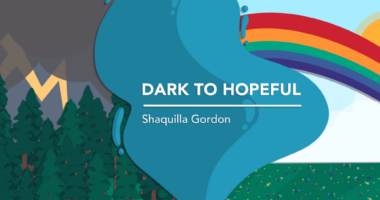The power of shared decision-making in patient care
Shared decision-making helped me turn fear into empowerment

Paroxysmal nocturnal hemoglobinuria (PNH) is more than just a tongue twister; it’s a rare, chronic blood disorder that alters every aspect of life.
When I was diagnosed with it in 2017, I quickly realized I wouldn’t just be on a physical journey, but also an emotional and informational one. With a disease so uncommon, it’s crucial to have a say in your care. That’s where shared decision-making becomes a lifeline.
PNH causes red blood cells to break apart prematurely, leading to fatigue, anemia, blood clots, and in some cases, organ damage. When I was diagnosed, I felt overwhelmed, especially with the barrage of medical terms, options, and risks. But as I learned more, I found that taking an active role in my treatment, alongside a trusted care team, gave me back a sense of control.
Shared decision-making means that patients and healthcare providers collaborate to make choices that align with a patient’s values, preferences, and lifestyle. It doesn’t mean you need a medical degree to make good decisions. It means your voice matters, and your goals, fears, and daily realities shape the plan.
Shared decision-making has led me to better outcomes and increased confidence in care choices. With a condition like PNH, where treatment options can include complement inhibitors such as Soliris (eculizumab), Ultomiris (ravulizumab), Empaveli (pegcetacoplan) and even bone marrow transplant in rare cases, understanding risks and benefits is essential.
One of the most helpful tools on my journey has been PNH support and educational resources, like those from the Aplastic Anemia and MDS International Foundation. Through webinars and downloadable guides, I found practical questions to ask my doctor, such as how does a particular medication work? What side effects should I expect? How often will I need labs?
These conversations often touch on topics beyond medicine, such as travel, parenting, mental health, and even career goals. For instance, working full time as a financial analyst and raising two teenage daughters means treatment convenience and energy levels matter a lot to me. With my hematologist’s support, I switched to a therapy with less frequent infusions, which better fits my life.
But shared decision-making isn’t a one-time event. It’s an ongoing dialogue. As your symptoms, circumstances, or treatment responses evolve, so should the plan. Regular check-ins, lab monitoring, and honest conversations are key.
Living with PNH is challenging, but shared decision-making has helped me turn fear into empowerment. If, like me, you are a PNH patient, remember that you are the expert of your own life — and that expertise belongs at the center of your care.
Note: PNH News is strictly a news and information website about the disease. It does not provide medical advice, diagnosis, or treatment. This content is not intended to be a substitute for professional medical advice, diagnosis, or treatment. Always seek the advice of your physician or other qualified health provider with any questions you may have regarding a medical condition. Never disregard professional medical advice or delay in seeking it because of something you have read on this website. The opinions expressed in this column are not those of PNH News or its parent company, Bionews, and are intended to spark discussion about issues pertaining to paroxysmal nocturnal hemoglobinuria.








Leave a comment
Fill in the required fields to post. Your email address will not be published.